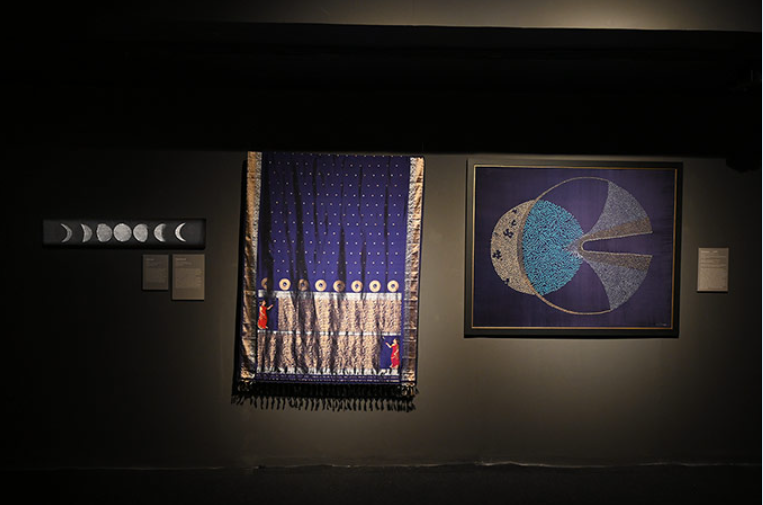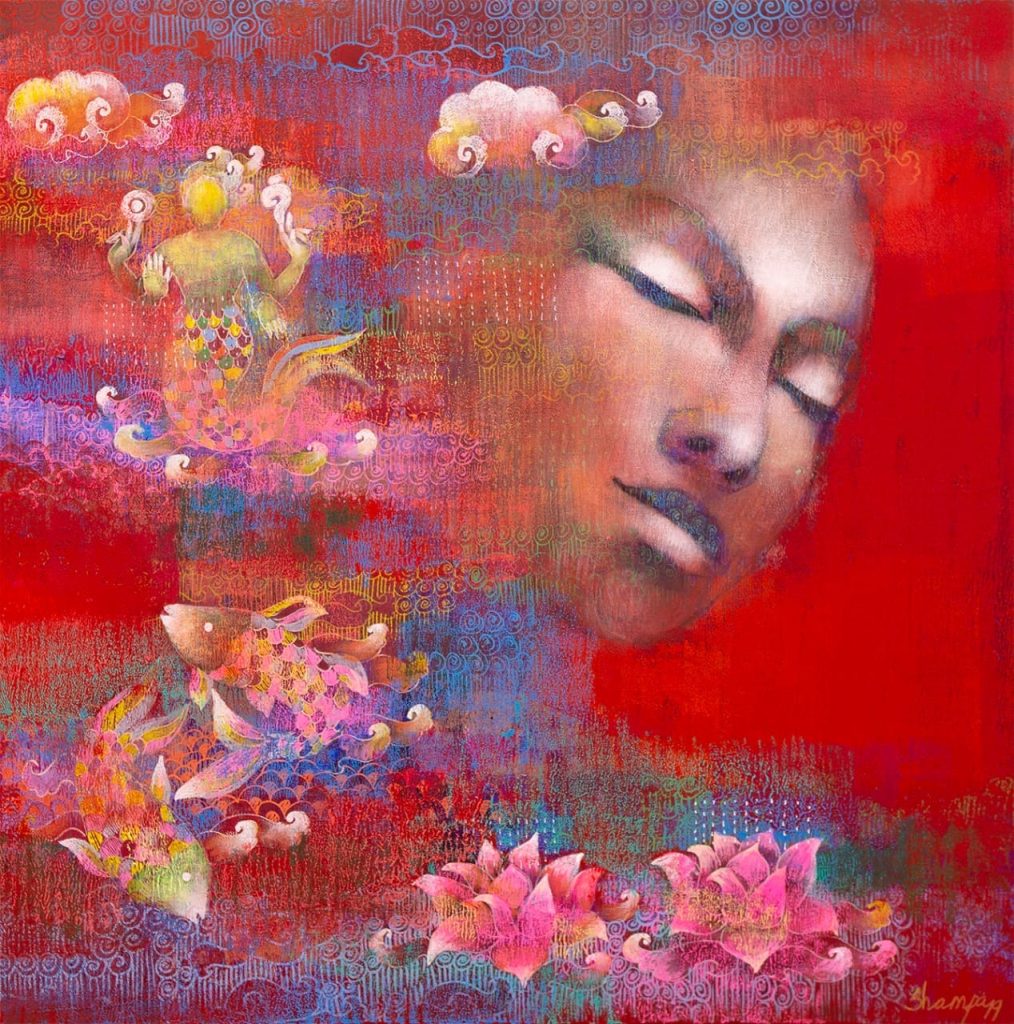A textile revolution has been happening in the country for the past few years, wherein Indian handlooms and handcrafted textiles are being upheld and exhibited in a grand manner to be celebrated. One such stunning exhibition is called Sutr Santati: Then. Now. Next is now showcasing more than 100 Indian textiles at the National Gallery of Modern Art, Mumbai by Abheraj Baldota Foundation. The exhibition ceases to amaze its audience with a re-imagined outlook towards Indian textiles all the while appreciating and celebrating India’s 75 years of Independence and our Khadi cloth.
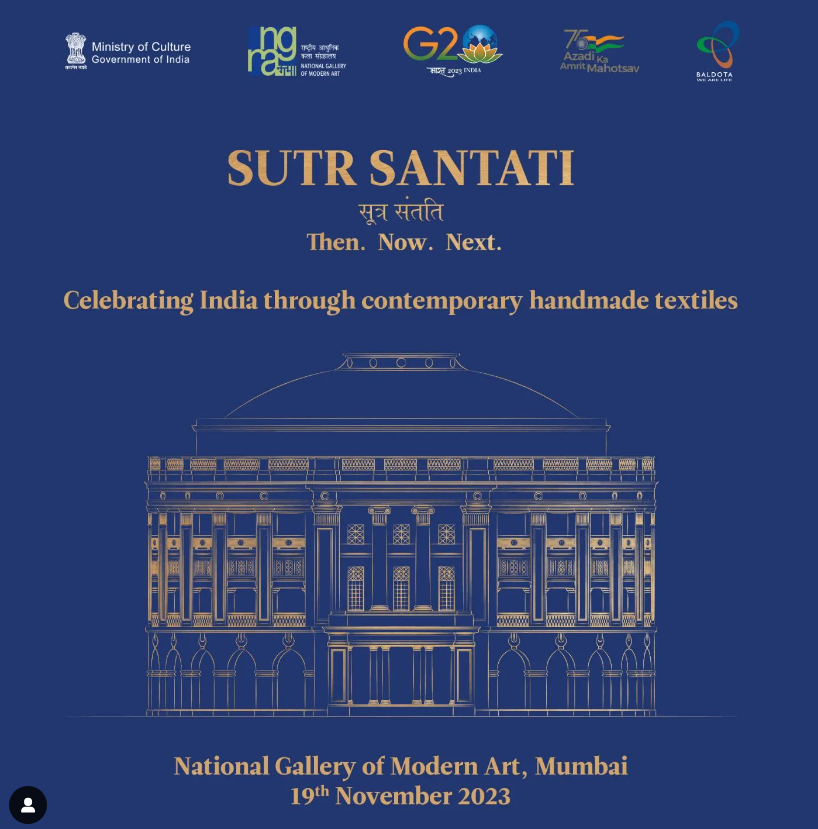
Homegrown textiles have now taken the country by a storm with designers, textile enthusiasts, museum professionals are now going back to their traditional roots and giving a voice to our Indian weavers, master craftsmen and dyers. These textiles and handiwork have also inspired many international and luxury brands and deserve to be exhibited centre stage. The exhibition is a treat for any textile or handloom enthusiast, from splendidly brocaded Asavali dupatta to the wall hangings made by the Rabari community from Kutch,Gujarat. One could be lost in the textile maze that has been rendered by more than 200 skilled craftspersons across the country.
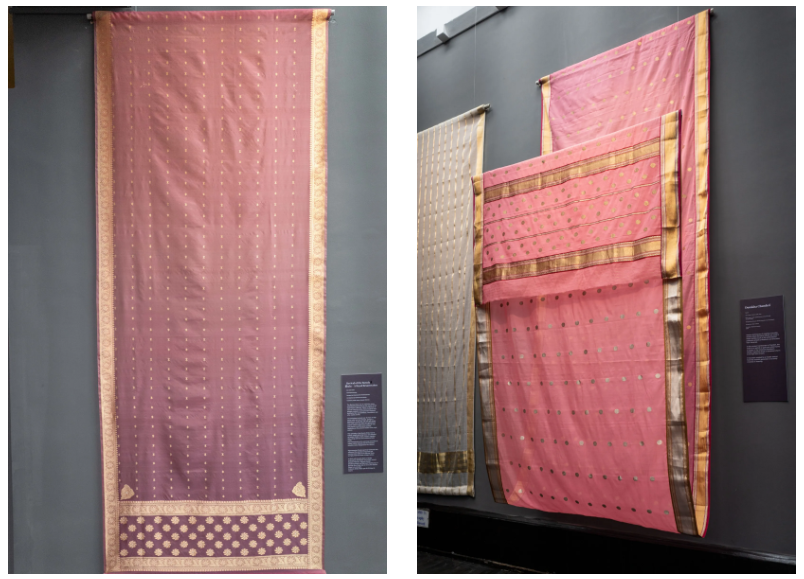
The exhibition has also extensively travelled before it finally is now exhibited at Mumbai, it started its journey in New Delhi, being exhibited at the National Museum and moved on to wow the audience at the Melbourne Museum, Australia. The exhibition’s curator, Ms Lavina Baldota, a textile connoisseur herself wanted to showcase India’s vast textile heritage in a new and unique format. She says the curation of the project started four years ago, but is an ongoing process in an interview with Architectural Digest.
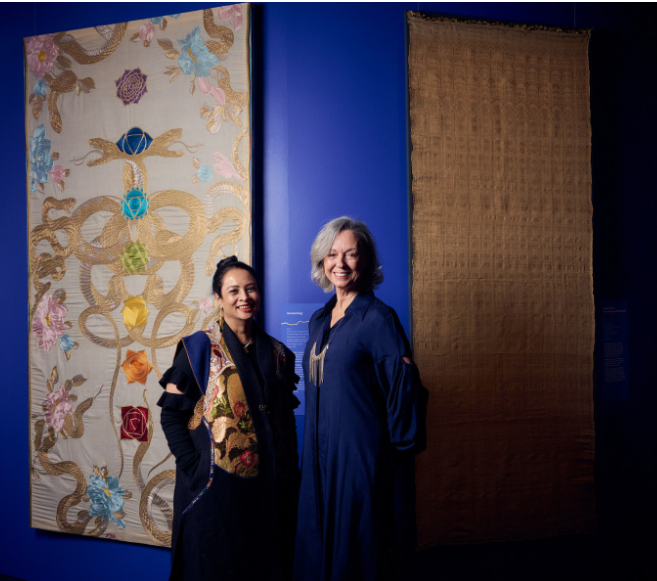
While prancing through the exhibition, a visitor could come across a beautiful Jamdani wall panel that beautifully strings together the works of our great poet Valmiki and the painter Raja Ravi Varma, the brainchild of designer Gaurang Shah and master weaver K Annaji Rao. The iconic rendition of Sita Bhumi Pravesh, which is Varma’s first painted picture from the Ramayana. The painting beautifully encapsulates the dramatic scene when Rama questions the fidelity and chastity of Sita, who is enraged and shocked by this acquisition. The same expression and scene has been beautifully rendered by the weaver onto the Jamdani piece exhibited at NGMA,Mumbai.
“Sutr Santati is a dialogue between Indian culture and society, focusing on self-reliance, craftsmanship and ecological preservation,” states Baldota in an interview with Architectural Digest. There are 5 basic thematic dispositions at play at the exhibition: Revival, The Sacred Thread, Indigenous Expressions, Nationalistic Themes and Studio Based Practices. The visitors first come across the revival theme with heritage and vintage pieces of ikat, heavily embellished zari saree called the Baroda Shalu worn by royalty and other heritage items are showcased. The second segment called the Sacred section has textiles and pieces which are used as ritualistic offerings to Indian temples and places of worship. Moving on to the Nationalistic section, homage is paid to Gandhi’s Charkha and the beginnings of the khadi movement, the message of swadeshi has been beautifully showcased within this section. Celebrating Indian plurality, diversity yet inclusivity within the Gandhian philosophy. Many little known techniques and new-age developments have been showcased at the exhibition, a Mata ni Pachedi by artist Sanjay Chitara (hand painted/block printed kalamkari wall panel) has been embroidered by metal thread making the Goddess’s dress seem like a heavy armour (kavachh) by Tarun Tehlani’s atelier studio. The Indigenous section has the beautiful Toda embroidered pieces such as Toda Puthkuzhy and Kotpads on display. “Textiles produced by indigenous communities involve materials, designs, techniques and uses which have primary meanings and roles within their cultural traditions. Whether created by those who have been rooted in specific geographies over long periods of time or those who represent relatively more itinerant, nomadic and migratory ways of living, such fabrics are an expression of intangible heritage.” explains Baldota in a detailed manner in an interview with Architectural Digest.
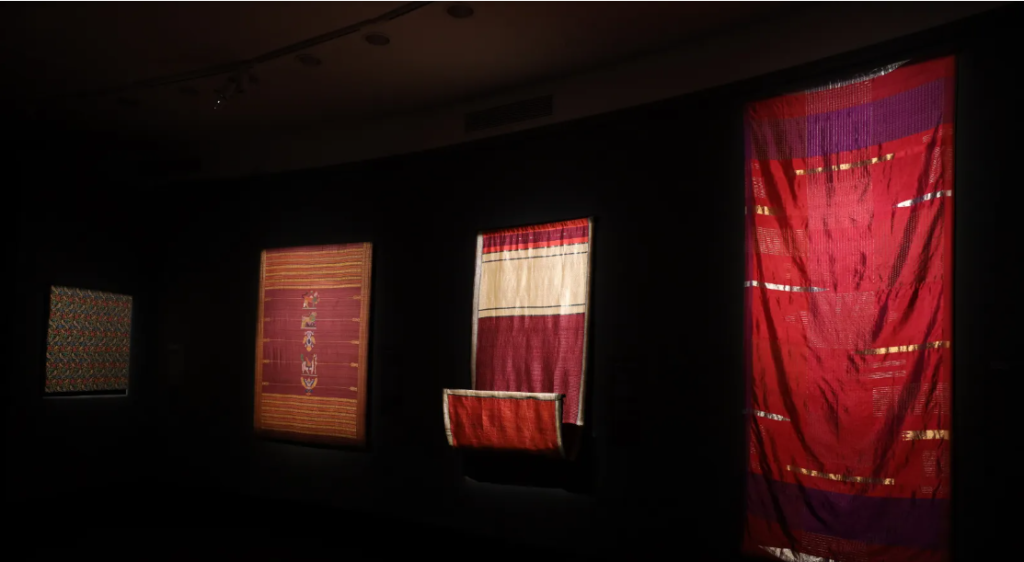
Speaking about the curator and custodian of the Abheraj Baldota Foundation,she inherited the love of textiles from her mother. Baldota says “When I got married, I wasn’t given any sequinned saris. My trousseau comprised all the weaves from different parts of the country,” in an interview with Hindustan Times. For the artists and artisans who have worked on this exhibition, it has been a creative resurgence for both that placed them together on a singular platform. Merging their skilled labour and artistic fervour that has led to a stunning coming together of the two.
Indian textile is a living sector with skilled craftspeople preserving Indian textiles over centuries, while the handloom sector has suffered greatly during the COVID times, it is taking its sweet time to bounce back. Textiles as we know have often been overlooked when compared to Visual and High art, however exhibitions such as Sutr Santati have been doing their bit to change that perception and put it on the same platform as Visual arts. Sutr Santati will amaze its viewers and leave them in awe and showcased our vast beautiful tangible and intangible heritage, that we all must appreciate and celebrate.
Sutr Santati: Then. Now. Next will run from November 19 to January 17 2024 at the National Gallery of Modern Art (NGMA,Mumbai)

